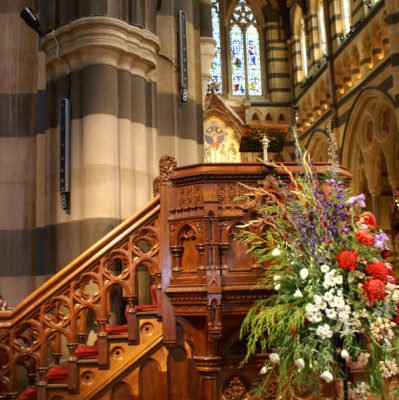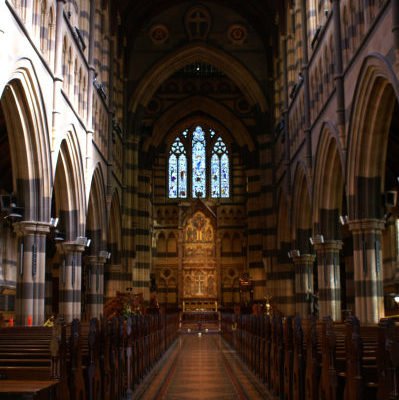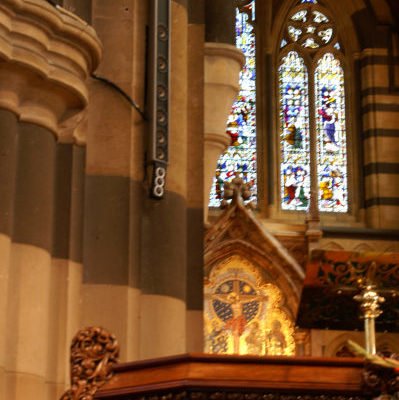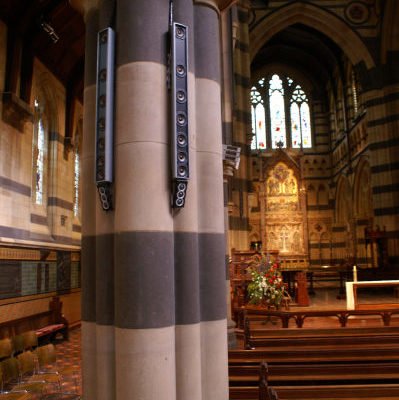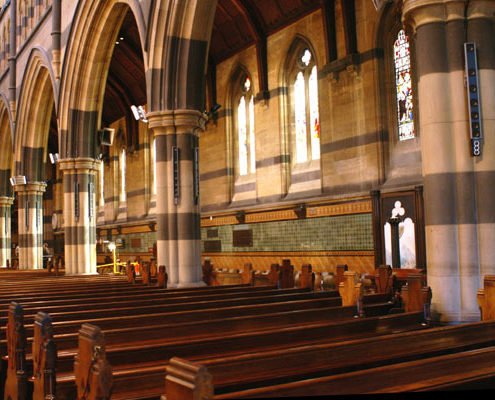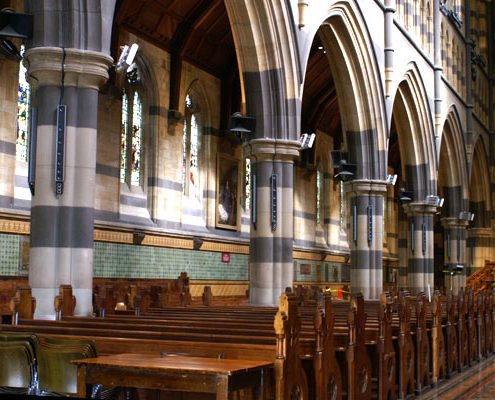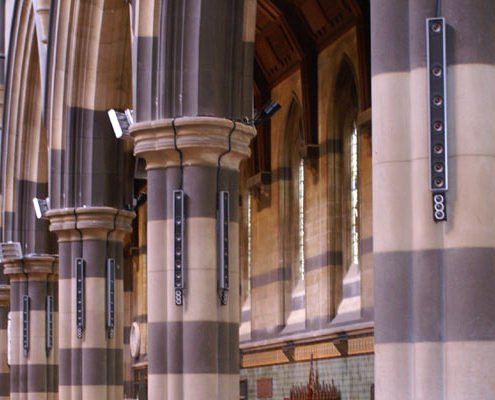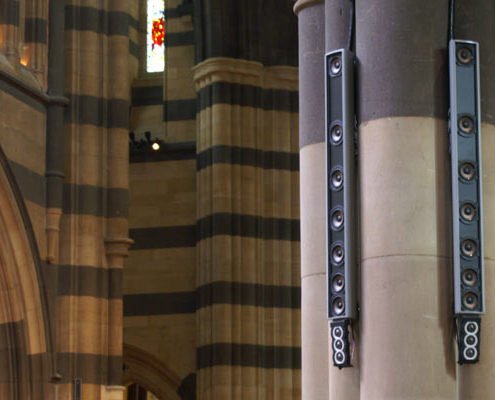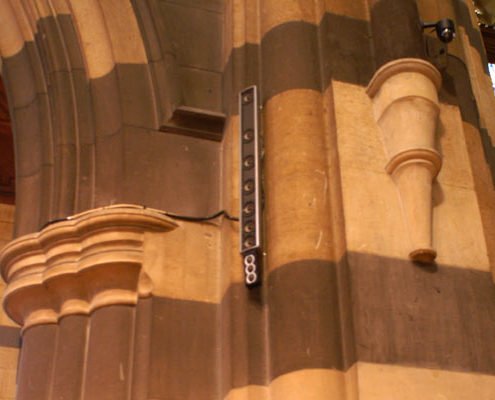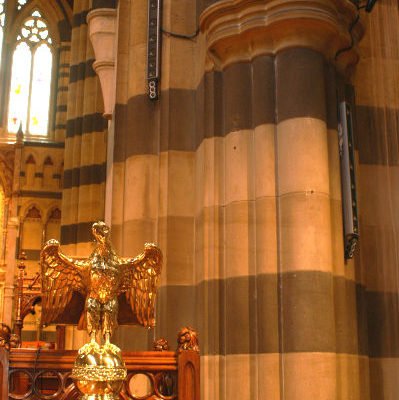The Venue
Melbourne’s St Paul’s Cathedral is a traditional Anglican church in the architectural style described as Gothic transitional, being partly Early English and partly Decorated. The foundation stone was laid in 1880, the Cathedral was consecrated in 1891, but it was not the building we see today. Erection of the spires did not begin until 1926. Upon entering the cathedral the beauty of the architecture and the stained glass windows is immediately apparent, as is the overall sense of peace and religious contemplation.
Since 2001 St Paul’s has had an ambitious restoration and conservation program in place. Along with many important structural building repairs, substantial work on the interior and a major upgrade of the building’s services is being undertaken.
A key component of the restoration is a complete reworking of the Cathedral’s audio distribution system. To this end the services of Acoustic Directions’ principal acoustics consultant Glenn Leembruggen was engaged. His brief was to design and commission a modern and effective audio system which would enable the Cathedral to more effectively conduct its ministry and communicate with the congregation.
Glenn has a great deal of understanding of, and practical experience with the unique acoustic challenges presented by this style of architecture and how best to design an audio system which will deliver highly intelligible reproduction to every pew in the church. Glenn is a pioneer in the use of beam steered line arrays and knew that this technology would be the ideal solution for the problems associated with long reverb times and multi-path reflections which are evident in the Cathedral.
The specification called for 46x Acoustic Technologies ALA07C Beam Steered Line Arrays to be mounted on the Cathedral’s columns. The mounting height on the columns varied with location, requiring steering angles from 20° to 40°. A custom frequency shaded tweeter array with adjustable inclination angle was designed and supplied for this installation.
Beam steered arrays require separate DSP and amplification for every transducer in the array. The St Paul’s installation saw the debut of the Acoustic Technologies FLA8.dsp Focused Linear Array System processor/amplifier.
The FLA8.dsp is an eight channel amplifier delivering 40 Watts per channel with extensive on board DSP capabilities. The St Paul’s Cathedral installation required some 26x FLA8.dsp with many of the ALA07C’s being powered in parallel due to the symmetry of the cabinet placement. Overall system integration is provided by Biamp Audia digital controllers programmed to provide a simple to operate system, catering for the daily needs of the church.
Heritage listed buildings require a carefully planned and conducted installation, all the more so for a system of this magnitude. Project architects Falkinger Andronas in conjunction with the installation team from Rutledge Engineering combined to provide a superbly installed system, with Acoustic Directions conducting the final commissioning.
So what was the final result?
To quote Glenn Leembruggen:
“The St Paul’s system sounds fantastic. It has exceeded our expectations and our hopes and I think it should be a showcase for the AT product. Rutledge have done a wonderful install job. When you are next in Melb, I suggest you attend a church service. For cathedrals and churches that have a reverb time of less than say 3.5 secs and a series of structural columns, this system has to be the optimum choice. It is also extremely cost effective, given its quality level.”
St Paul’s Cathedral have echoed Glenn’s sentiments when they said to him:
“We believe that the installation of the new sound system has become the most important part of the entire restoration project.”

